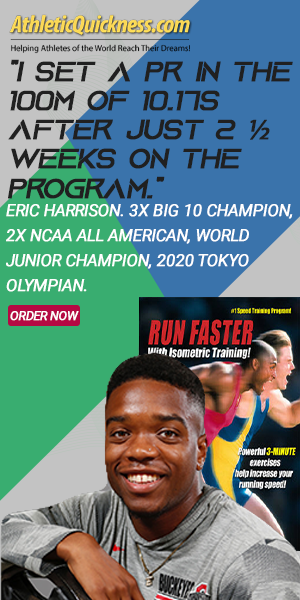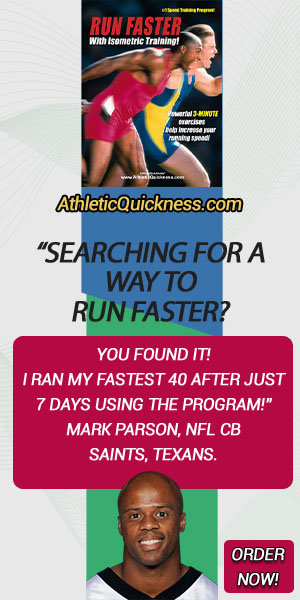Attention baseball players who want more hits, more homeruns and fewer strike outs…
Does your hitting coach have you training
your superior and inferior gemellus muscles?
These two tiny little muscles located in the posterior hip region hold the key to your baseball swing speed and hitting power!
That’s right. You may think you are improving your baseball swing speed, but if you aren’t training these two little hip muscles and seven others collectively known as the lateral or external rotators of the hip, then your bat speed, hitting distance, and, yes, even your pitching & throwing speed will be significantly slower!
Baseball bat speed and power is generated first from
muscles that control the hips.
Every major league coach and trainer knows that swing speed and hitting power originate in the hips. But not every major league coach and trainer knows the specific muscles involved as well as how to effectively target and train those muscles to make them contract with speed and acceleration.
There are nine lateral rotators of the hip muscles located on each side of your body for a total of 18. You might think of them as “nine baseball players” on each team.
As a group, these muscles are among the strongest in the body. They are responsible for performing such basic functions as rotating the hips laterally to the left and right, controlling posture, walking and running.
Ironically, in spite of their incredible inherent strength, they are severely under-developed in most athletes, including professionals. This is simply because many people, are unaware of their importance and function.
Ask this question, “When was the last time I trained my superior and inferior gemellus muscles?” See what I mean!
Weak lateral hip rotators reduce bat speed and ultimately hitting distance.
The normal baseball swing has three basic components: 1) the backswing, also known as the loading phase or the cocking phase, 2) the forward swing, also known as the release or the uncoiling phase and 3) the follow-through.
The backswing is similar in some respects to the wind-up used by pitchers, but not as exaggerated. The purpose of it is to stretch the lateral rotators of the hips, lateral rotators of the spine and movers of the arms on certain sides of your body and ready them for release or contraction during the forward swing.
For most, the backswing starts off with equal weight applied to both feet, but some may like to adjust a little, back and forth, between the two. Either way, once the player picks up the ball from the pitcher, his weight is then rotated away from the pitcher. This is the function of the lateral or external rotators of the hips on one side of the body only.
For right hand players, it is the lateral rotators of the hips on the right side of their body that contract during the backswing while those on the left side get stretched. For left hand players, it is the lateral rotators of the hips on the left side of their body that contract during the backswing while those on the right side get stretched.
There are two other basic motions that follow this shift. One is the spine rotates slightly back and away from the pitcher. This is a function of the lateral rotators of the spine.
For right hand players, the lateral rotators of the spine on the left side of the body contracts during the backswing while those on the right get stretched. For left hand players, the lateral rotators of the spine on the right side of the body contract during the backswing while those on the left get stretched. Note that this is probably the opposite of what you might expect and it has to deal with the oblique arrangement of the origin and insertion of these muscles.
The final motion is the arms also rotate slightly back and away from the pitcher. This is a function of the primary movers of the arm muscles. For right hand players, the primary movers of the arms on the right side of the body contract and those on the left are stretched. For left hand players, the primary movers of the arms on the left side of the body contract and those on the right are stretched.
The backward movement of the hips, spine and arms
stretches the muscles so they release with more power
All three of these movements do not necessarily appear to involve a significant range of motion, however the combined effect of all three muscle groups contracting on their corresponding side of the body, slightly back and away from the pitcher, is to stretch these super strong muscles into their most efficient position.
Stretched muscles typically have far more capability of contracting stronger and faster than ones simply at rest, and when the change in direction of these muscles to start the forward swing is timed at their optimum stretch levels, the reflex to start the forward swing becomes very powerful.
So, the backswing plays a very crucial role in setting you up for a more powerful forward swing and it pays to know what muscle groups are responsible.
Guess who initiates the forward swing? The ‘Twins’, of course!
The forward swing is the release part of the baseball swing. It is where all of the muscular power that was stored up in the stretched muscles of the backswing gets ‘released’. But the forward swing doesn’t just happen randomly with some muscle groups contracting first one time and then contracting last another time. Rather, the muscles contract in the exact same order as when they were stretched to set up the backswing.
The first muscle group that was stretched in the backswing is the first one to get called into action in the forward swing. These are the stretched lateral rotators of the hips, including those two little muscles with the funny sounding names; the superior gemellus and inferior gemellus. They helped you shift your weight to the back foot and now their counterparts on the other side of the body are stretched and ready for action.
The word gemullus is taken from the word geminus, which means twin. Both the superior and inferior gemellus muscles are identical in their function and are paired in all activities, hence the name.
These two muscles, along with the other seven lateral rotators of the hips, initiate your forward swing. If all of them are weak, your bat speed, hitting distance and even pitching speed will be negatively affected. If all of them are strong, your bat speed, hitting distance and throwing speed will all be dramatically improved.
You have perhaps been training these muscles along the way but perhaps never were fully aware of it. Simply putting yourself through batting practice is one way to exercise them as well as all the other muscles involved in the forward swing.
Sometimes, though, it helps to break down a complex movement like the forward swing and instead of performing an exercise that gets to all of the muscles at once, it can also help to break the motion down into smaller segments and train each of those individually.
When done this way, you can better locate the weak spots in your training and begin to focus more on those particular areas.
Exercising specific muscles that are hard to get to …
The challenge with doing this sometimes is finding a weight machine specific to the smaller movement or some other exercise that simply targets the specific muscle group you are looking to improve.
However, using resistance bands with an isometric training strategy is an effective way to isolate any muscle group including the lateral rotators of the hips which are normally hard to isolate by themselves with other methods.
And, because the weight of the resistance band is negligible, and the force they can withstand can be upwards of hundreds of pounds, getting in to an exact position and training a certain muscle group effectively is often a lot easier and safer than when using heavy weights.
These types of exercises almost always look a bit strange and different from what people are normally accustomed to, however, therein lies one of the benefits to trying it. You’ve probably never done such an effective exercise before!
The creativity with which the resistance bands can be used is endless and just knowing some of the basic anatomy that goes into a particular motion of the baseball swing can make all the difference in whether or not you are competing at a high level or just trying to make the team.
AthleticQuickness.com exercise programs provide easy solutions to complex movements that improve your baseball swing speed, throwing speed and running speed.
Improving your baseball swing speed, running speed and pitching speed are some of the skills that are easily solved using the resistance band with an isometric training strategy.
Always glad to help!
Dr. Larry Van Such
P.S. If you have never trained these muscles before, you can expect to start seeing results in your hitting distance in 14 days or even less! Yes, this means softball bat speed as well as baseball.
P.P.S. It’s always a thrill when you see the outfielder playing you too shallow and you know you can slam it over his head!






